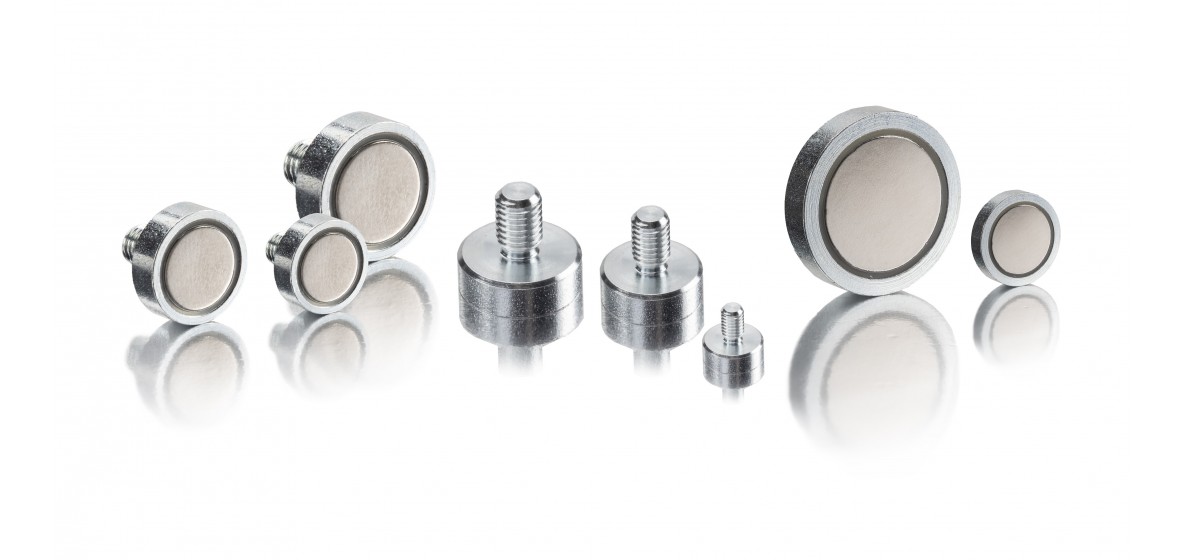Neodymium magnets
Find all our Neodymium-Iron-Boron references: pots, blocks, disks, rings, etc.

Find all our Neodymium-Iron-Boron references: pots, blocks, disks, rings, etc.
11 products
Neodymium-Iron-Boron magnets are sintered permanent magnets, composed of Neodymium, Iron and Boron powder, which forms a tetragonal crystal system. They are part of the rare earth family.
Developed in the 1980s, they are the most powerful magnets on the market. They have replaced other types of magnets in products requiring permanent magnets with high coercivity. They have replaced Samarium-Cobalt magnets because of their excellent magnetic properties at near-ambient temperatures. Neodymium-iron-boron magnets have an attractive force about seven times greater than ferrite magnets. Their maximum magnetic energy can reach over 50 MGOe.
Due to their high magnetic field, Neodymium magnets can be dangerous and cause irreversible damage to devices and objects.
The high iron content of neodymium makes it a sensitive magnet to corrosion. A surface treatment with zinc, nickel, gold or epoxy resin is essential. These magnets are fragile ceramics and must be handled with care. To avoid attracting the magnets when handling them, it is advisable to place them on a soft steel support. Avoid hitting and squeezing them.
Neodymium magnets are used in a variety of applications: DIY, fishing with magnets, transport, electric motors, biological implants, renewable energy, physics experiments, loudspeakers, etc.
The load-bearing capacity of Neodymium magnets is optimal when they are in contact with a soft, flat, clean and sufficiently thick steel frame. It decreases for cast iron (-30%) and alloyed steels. It decreases when there is an air gap and decreases by 0.22% per degree for favourable magnetic circuits.
The maximum value of surface induction is, at 20°C, of the order of 5000 Gauss for Neodymium-Iron-Boron pellets. This value decreases by 0.11% per degree C as the temperature increases.
The maximum operating temperature is around 80°C, mainly due to the temperature sensitivity of Hcj (0.66% per degree). Induction losses are reversible as long as they are within the operating temperatures of the material. This limit is 80°C for the standard grade in open circuit. There are several grades of Neodymium-Der-Boron that can go up to 180°C. Euromag presents the N35 grade (80° temperature).